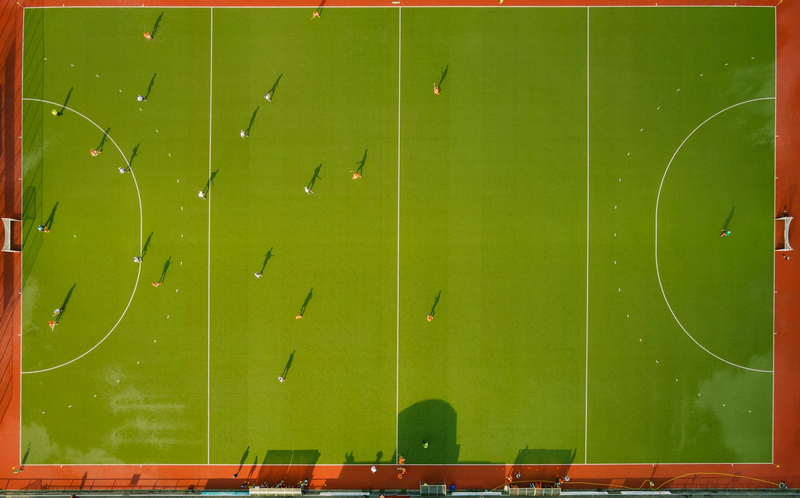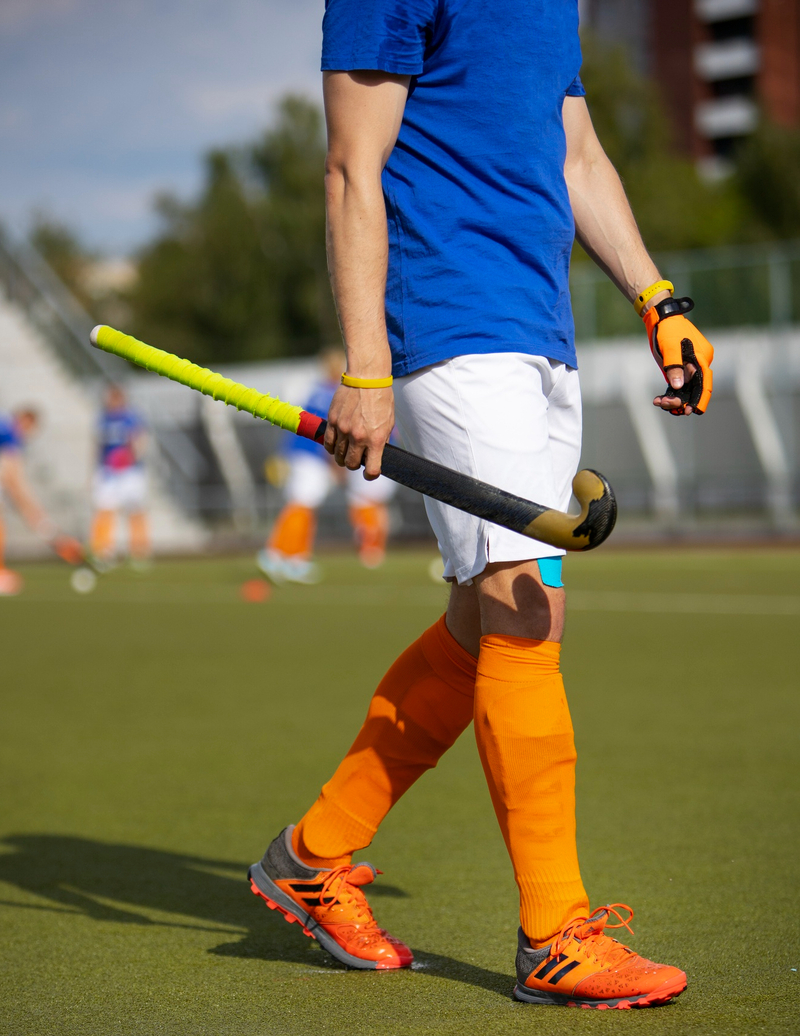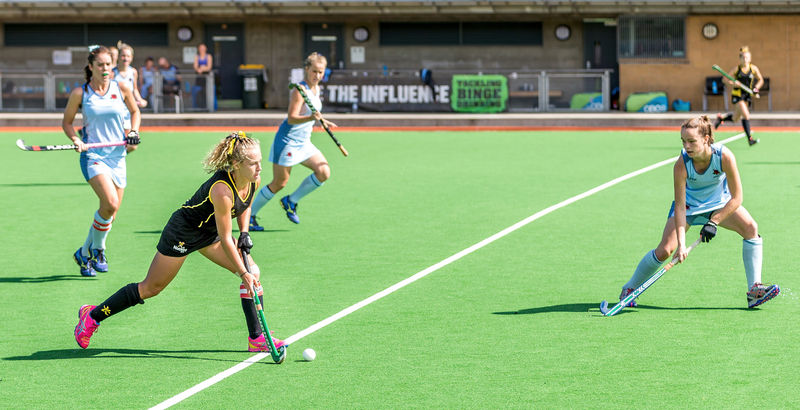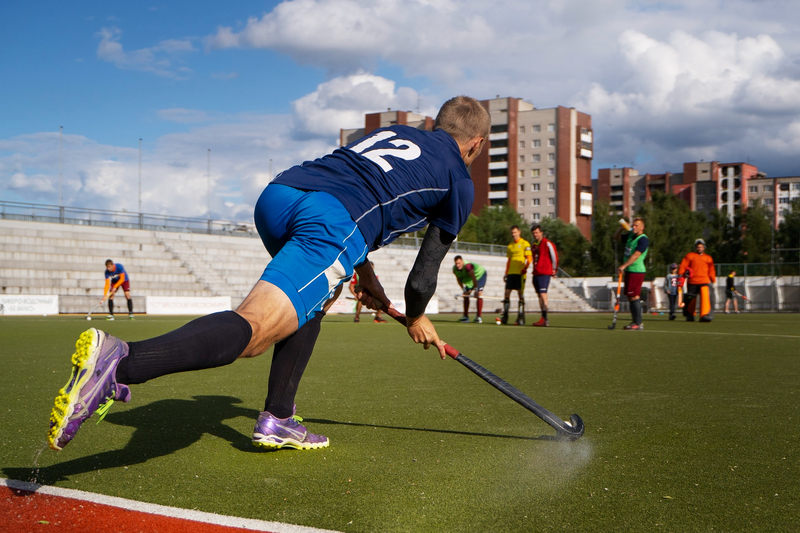From Sticks to Scoring: A Beginner’s Guide to Field Hockey
Are you new to the game of field hockey? Whether you're interested in playing or just want to learn more about the sport, this guide will give you a solid foundation.
A Short History of Field Hockey
Field hockey is believed to have originated in ancient Egypt and Persia, but it wasn't until the 19th century that the modern game took shape. The first official rules were established in England in 1886, and since then, field hockey has become a popular sport around the world.
Field Hockey Pitch and Equipment
A standard field hockey pitch is 100 yards long and 60 yards wide, with a shooting circle at each end.

The ball is typically made of hard plastic and weighs between 155 and 163 grams. Players are required to wear shin guards, mouth guards, and shoes with cleats. And then, of course, you need a hockey stick.
Sticks come in a variety of lengths and shapes but must meet certain specifications outlined by the International Hockey Federation (FIH). The stick for an adult is usually from 89–95 cm (35–38 in) long, with a maximum length of 105 cm (41.3") and a maximum weight of 737 grams.

The Rules of Field Hockey
The objective of the game is to score more goals than the opposing team. The game starts with a push-back from the centre of the field, and the team that wins the coin toss starts with the ball. Each team consists of 11 players, including a goalkeeper who wears protective equipment.
Players move the ball by hitting it with their sticks, which are usually made of wood or composite materials. Players are not allowed to use their feet, hands, or any other body part to control the ball, and they cannot obstruct or tackle other players. If a player commits a foul, the opposing team is awarded a free hit.
The types of fouls that can be committed during a game include:
- Foot foul: when a player uses their feet to control the ball.
- Obstruction: when a player obstructs the path of another player who is trying to move towards the ball.
- Stick foul: when a player hits another player's stick instead of the ball.
- Dangerous play: when a player takes an action that could cause injury to themselves or others.
- Backsticks: when a player hits the ball with the rounded side of the stick instead of the flat side.
If a foul is committed inside the shooting circle, the opposing team is awarded a penalty corner. During a penalty corner, the attacking team takes a free hit from the edge of the circle, and the defending team must defend their goal. If a defender commits a foul during a penalty corner, the attacking team is awarded a penalty stroke. A penalty stroke is a free shot at the goal from a set distance away.
The game is played in two 35-minute halves, with a 10-minute halftime break. If the game is tied at the end of regulation time, a penalty shootout is used to determine the winner.
Try Sportmember for free - Create profile
Player Positions in Field Hockey
- Goalkeeper: The goalkeeper is the last line of defence for the team. They wear protective gear and use a stick that's different from the other players' sticks. They're responsible for stopping shots from the opposing team and clearing the ball out of the defensive circle.
- Defenders: Defenders play in the backfield and are responsible for protecting the goal and preventing the opposing team from scoring. They use their sticks to tackle and intercept passes and clear the ball out of the defensive circle.
- Midfielders: Midfielders play in the middle of the field and are responsible for both defending and attacking. They help move the ball up the field and create scoring opportunities for their team. They also help defend when the opposing team is on the attack.
- Forwards: Forwards play in the forward line and are responsible for scoring goals. They use their speed and agility to manoeuvre around defenders and create scoring opportunities. They also help defend by putting pressure on the opposing team's defenders and midfielders.
- Sweeper: The sweeper is a specialized defensive position that's not used as often as it used to be. They play behind the other defenders and are responsible for sweeping up any loose balls that get past the other defenders. They also help clear the ball out of the defensive circle.
Each position requires different skills and strengths, and a good team will have players who excel in each position. Whether you're a goalkeeper, defender, midfielder, forward, or sweeper, the key to success is teamwork and communication!

Scoring in Field Hockey
A goal is scored when the ball is hit into the opposing team's goal from within the shooting circle. A penalty stroke is awarded if a foul is committed inside the shooting circle.
Scoring System and Different Scoring Situations in Field Hockey
A goal is scored when the ball is hit into the opposing team's goal from within the shooting circle. The shooting circle is a semi-circular area with a radius of 16 yards (14.63 meters) around each goalpost. If a ball is hit into the goal from outside the shooting circle, the goal does not count.
When a team scores a goal, the game resumes with a push-back from the centre of the field by the team that conceded the goal. If the game is tied at the end of regulation time, a penalty shootout is used to determine the winner.
TIP: Do also read about ourMember management software
Apart from a regular goal, there are two different scoring situations in field hockey:
- Penalty Stroke: A penalty stroke is awarded if a defender commits a foul inside the shooting circle that would have likely resulted in a goal if the foul had not been committed. A penalty stroke is taken by a player from the attacking team and the goalkeeper from the defending team must defend the goal. The player taking the penalty stroke is allowed to take only one shot at the goal.
- Penalty Corner: A penalty corner is awarded to the attacking team if a defender commits a foul inside the shooting circle or if the ball unintentionally goes over the backline of the defending team. The attacking team takes a free hit from the 10-yard line outside the shooting circle, and the defenders must defend the goal. The attacking team can either shoot directly at the goal or pass the ball to another player to take a shot.
To summarise: a goal is scored when the ball is hit into the opposing team's goal from within the shooting circle. Penalty strokes and penalty corners are two other scoring situations that can occur during a field hockey game.

Tips for Field Hockey Beginners
- Practice hitting the ball with both sides of your stick.
- Improve your stick skills by practising dribbling and passing drills.
- Focus on positioning and communication with your teammates.
- Stay low to the ground and use your body to protect the ball.
Most importantly, have fun and enjoy the game!
Governing Bodies of Field Hockey
In the United Kingdom, field hockey is governed by four separate national governing bodies:
- England Hockey: responsible for the development and administration of the sport in England.
- Scottish Hockey: responsible for the development and administration of the sport in Scotland.
- Hockey Wales: responsible for the development and administration of the sport in Wales.
- Ulster Hockey: responsible for the development and administration of the sport in Northern Ireland.
Internationally, the sport is governed by the International Hockey Federation (FIH), which was founded in 1924 and is based in Lausanne, Switzerland. The FIH is responsible for organizing international tournaments, such as the Hockey World Cup and the Olympic hockey tournament, as well as overseeing the rules of the game and the development of the sport globally.
Is Field Hockey for you?
With this guide, you're well on your way to understanding the basics of field hockey. If you're interested in getting involved in field hockey, you can contact your local hockey association or club to find out more about the opportunities available in your area. By following the rules and playing fair, you can enjoy a fun and competitive game of field hockey. Get out there and give it a try!
Field Hockey and SportMember
We hope this beginner's guide has helped you understand the basics of field hockey and inspired you to pick up a stick and ball and give it a try. Remember, the key to becoming a good hockey player is practice, so get out there and start playing!
The full overview and laws of the game can be found on the FIH website. There are loads of hockey clubs in the UK, and many of them are using a club management system, like Sportmember, to streamline their club admin and help save time running their club.
SportMember allows you to gather all the club's functions in one place; member database, calendar and event planning, attendance, membership fees collection, and so much more (including a fully integrated and free website).
Creating a club profile on SportMember will help you run and structure the club, and save you a lot of time on otherwise manual tasks. Try it out by clicking "Create profile" below.